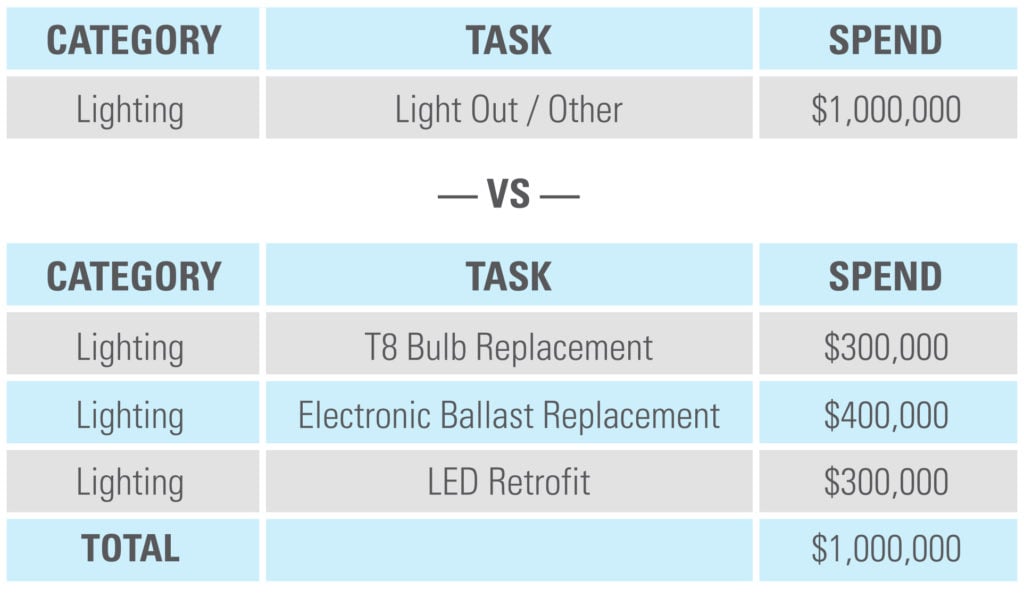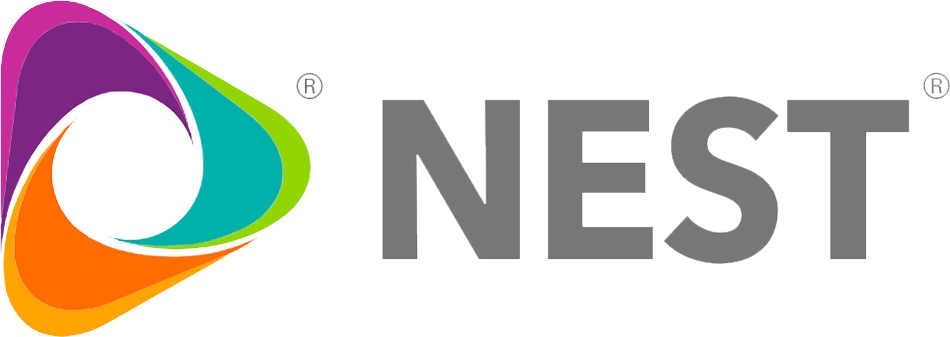
Every facility manager – in fact, every business – has them: those “minor” expenditures that lack detail or simply don’t have a specific label. Contractors who are too busy to itemize every task in a service contract fall into the same challenge. So these line items, rather than being clearly separated and specified, are passed along the approval chain marked as “Miscellaneous” or “Other.”
Does it save time in the short run?
Of course … log a service call, give it a category, and move on. Does it waste time and potentially money in the long term because management can’t fully assess costs or potential savings? Absolutely … and there is simply no reason why existing platforms can’t take the extra step of analyzing work and associating a task to each step rather than taking the easy way out and settling for “other,” especially if there is a cost for that system.
Recently we had a retailer approach us to assess their costs. In evaluating the data that they had sent us, covering $3 million in expenses, roughly half was categorized as “other.” The data was provided in a spreadsheet format, which was exported from their previous work order platform. The client had no way of assigning a task for the work performed, or worse, determining if they were getting proper value for the dollars spent.
It’s impossible for any manager to benchmark costs and plan an annual budget when items are so vague. By specifying and assigning a task (and thus a standard cost) to a repair, managers can simply multiply the rate by the services and determine a true price. This allows him or her to plan for the future, and have benchmarks for comparison in the present.
Data is relatively easy to obtain, but knowledge is much trickier and infinitely more important to the success of a business.
It’s important that service providers look beyond the simple work order and response to assess if their clients (such as retailers) can spend their monies in a more efficient way. Retailers today need partners who will do more than report costs and generic analytics. There is a much higher benefit to working with consultants who will go beyond “other” to help them run a more efficient business.
Once a client has sent us a full download of their data, our team analyzes it line by line, assigning a specific task to each expense. This painstaking attention to detail, which isn’t a quick process, will give the client a truly granular portrait of where each dime of a multi-million dollar budget is going, and allows us to recommend areas where a greater efficiency can be achieved.
This is important at all levels of the corporate structure. While most senior managers want to look at the big picture, profits and losses take place at the micro level. Sometimes you need to see the trees, not the forest. There are many examples of why this is so important to the client. Below is a very simple example:

The first portion is a sample of what we typically receive from customers who are experiencing the “other” world. Going to your Controller or CFO and telling them that you’ve spent $1 million in lighting replacements will probably get you two minutes of their time, followed by a polite request to exit their office. The second portion, however, gives you an idea of what a technology platform and consultative approach gives you. Now you know that you’ve spent $300,000 in T8 Bulb Replacements. You can plan for the next year’s retrofit by allocating those costs to the LED line item. Plus, you’ve spent $400K in replacing electronic ballasts. Wait a minute: you were supposed to have a two-year warranty on that part. It’s time someone calls your supplier to find out how this is happening. Or better yet, imagine if you were getting this type of data throughout your fiscal year…you could have nipped it in the bud BEFORE it became a $400,000 line item. A monthly or quarterly business review could provide you with this detail. If you don’t want to wait until the next review, why not pull it up real time on our Facilitate platform? It’s there for you to review any time, day or night.
This is genuinely a strategic lens as to their operations, allowing clients to take a step back and assess whether they are controlling their activities holistically.
This type of microanalysis is even more important at the department manager level. While the overall savings accrued by assessing individual costs could be a small percentage of sales (where the CFO or senior VP of operations will look), each department VP or manager likely is judged by his or her ability to control a specific budget. Once we’ve created the tasks or line items to specify expenses, the control comes much more easily.
Everybody is happy: The controller is grateful for the ability to manage even the smallest expense, while the department manager can see where he or she needs to get a handle on specific suppliers or costs.
Facility Managers should ask themselves if they are getting the detail they need and the value they seek from their current platform. Are you just getting data-or are you obtaining true knowledge about the health of your company and empowered to make smarter decisions?







